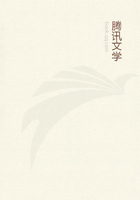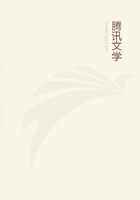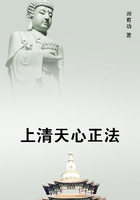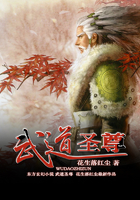In this story she typifies the faithful wife, but other legends show another side of her character, as in that of Gilgame?, ruler of her city Erech, to whom she makes love.Gilgame?, however, knowing the character of the divine queen of his city too well, reproaches her with her treatment of her husband and her other lovers--Tammuz, to whom, from year to year, she caused bitter weeping; the bright coloured Allala bird, whom she smote and broke his wings; the lion perfect in strength, in whom she cut wounds "by sevens"; the horse glorious in war, to whom she caused hardship and distress, and to his mother Silili bitter weeping; the shepherd who provided for her things which she liked, whom she smote and changed to a jackal; I?ullanu, her father's gardener, whom she tried, apparently, to poison, but failing, she smote him, and changed him to a statue(?).On being thus reminded of her misdeeds, I?tar was naturally angry, and, ascending to heaven, complained to her father Anu and her mother Anatu, the result being, that a divine bull was sent against Gilgame? and Enki-du, his friend and helper.The bull, however, was killed, and a portion of the animal having been cut off, Enki-du threw it at the goddess, saying at the same time that, if he could only get hold of her, he would treat her similarly.Apparently I?tar recognised that there was nothing further to be done in the matter, so, gathering the hand-maidens, pleasure-women and whores, in their presence she wept over the portion of the divine bull which had been thrown at her.
The worship of I?tar, she being the goddess of love and war, was considerably more popular than that of her spouse, Tammuz, who, as among the western Semitic nations, was adored rather by the women than the men.Her worship was in all probability of equal antiquity, and branched out, so to say, in several directions, as may be judged by her many names, each of which had a tendency to become a distinct personality.Thus the syllabaries give the character which represents her name as having also been pronounced /Innanna/, /Ennen/, and /Nin/, whilst a not uncommon name in other inscriptions is /Ama-Innanna/, "mother I?tar." The principal seat of her worship in Babylonia was at Erech, and in Assyria at Nineveh--also at Arbela, and many other places.She was also honoured (at Erech and elsewhere) under the Elamite names of Ti?pak and ?u?inak, "the Susian goddess."Nina.
From the name /Nin/, which I?tar bore, there is hardly any doubt that she acquired the identification with Nina, which is provable as early as the time of the Laga?ite kings, Lugal-anda and Uru-ka-gina.As identified with Aruru, the goddess who helped Merodach to create mankind, I?tar was also regarded as the mother of all, and in the Babylonian story of the Flood, she is made to say that she had begotten man, but like "the sons of the fishes," he filled the sea.
Nina, then, as another form of I?tar, was a goddess of creation, typified in the teeming life of the ocean, and her name is written with a character standing for a house or receptacle, with the sign for "fish" within.Her earliest seat was the city of Nina in southern Babylonia, from which place, in all probability, colonists went northwards, and founded another shrine at Nineveh in Assyria, which afterwards became the great centre of her worship, and on this account the city was called after her Ninaa or Ninua.As their tutelary goddess, the fishermen in the neighbourhood of the Babylonian Nina and Laga? were accustomed to make to her, as well as to Innanna or I?tar, large offerings of fish.
As the masculine deities had feminine forms, so it is not by any means improbable that the goddesses had masculine forms, and if that be the case, we may suppose that it was a masculine counterpart of Nina who founded Nineveh, which, as is well known, is attributed to Ninos, the same name as Nina with the Greek masculine termination.
Nin-Gursu.
This deity is principally of importance in connection with the ancient Babylonian state of Laga?, the home of an old and important line of kings and viceroys, among the latter being the celebrated Gudea, whose statues and inscribed cylinders now adorn the Babylonian galleries of the Louvre at Paris.His name means "Lord of Girsu," which was probably one of the suburbs, and the oldest part, of Laga?.This deity was son of En-lila or Bêl, and was identified with Nirig or ênu-rê?tu.
To all appearance he was a sun-deity.The dialectic form of his name was /U-Mersi/, of which a variant, /En-Mersi/, occurs in an incantation published in the fourth volume of the /Cuneiform Inscriptions of Western Asia/, pl.27, where, for the Sumerian "Take a white kid of En-Mersi," the Semitic translation is "of Tammuz,"showing that he was identified with the latter god.In the second volume of the same work Nin-Girsu is given as the pronunciation of the name of the god of agriculturalists, confirming this identification, Tammuz being also god of agriculture.
Bau.
This goddess at all times played a prominent part in ancient Babylonian religion, especially with the rulers before the dynasty of Hammurabi.She was the "mother" of Laga?, and her temple was at Uru-azaga, a district of Laga?, the chief city of Nin-Girsu, whose spouse she was.Like Nin-Girsu, she planted (not only grain and vegetation, but also the seed of men).In her character of the goddess who gave life to men, and healed their bodies in sickness, she was identified with Gula, one of those titles is "the lady saving from death".Ga-tum-duga, whose name probably means "making and producing good," was also exceedingly popular in ancient times, and though identified with Bau, is regarded by Jastrow has having been originally distinct from her.
Ere?-ki-gal or Allatu.















